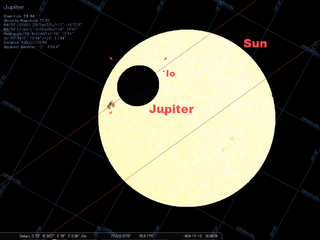Is a significant amount of light energy blocked by one planet such that there is noticeable cooling of the atmosphere of another?
-
1$\begingroup$ Planets look pretty tiny without a telescope. Why do you think they might block a noticeable amount of light? $\endgroup$– PM 2RingCommented Dec 24, 2022 at 2:26
-
2$\begingroup$ From Earth, Venus' max size is about 1 arcmin, compared to the Sun's 30 arcmin. If you compute the surface area of each circle, Venus blocks .1% of the Suns' disk. Variations in cloud cover certainly account for much more than that. $\endgroup$– Greg MillerCommented Dec 24, 2022 at 4:49
-
1$\begingroup$ @GregMiller that is an answer $\endgroup$– planetmakerCommented Dec 24, 2022 at 8:00
-
2$\begingroup$ For an Earth-centered view see xkcd.com/1276 $\endgroup$– Jon CusterCommented Dec 24, 2022 at 15:00
-
$\begingroup$ Jon Custer xkcd.com/1276. Voyager has a shadow the size of a bacterium..Wow! $\endgroup$– user48394Commented Dec 24, 2022 at 15:19
1 Answer
It is detectable, but not substantial.
When Venus transited in 2012, it blocked about 0.1% of the light from the sun, which was unnoticeable. This is about 10% of the variation in the sun's brightness over it 11 year cycle. It is much less than atmospheric effects, such as variation in global cloud cover.
The biggest transit would be a transit by Jupiter, viewed from Saturn:
Even this would not cause notable cooling, and would not even be noticeable to someone who was not looking at the sun (our eyes adapt to variations in overall brightness)
Of course a transit by the moon, viewed from Earth, does cause noticeable local cooling.
-
1$\begingroup$ Actually, Venus is about 1 arcmin, and the sun is about 30 arc min, so 1/30^2 = 1/900 = 0.00111 or about 0.1% $\endgroup$– James KCommented Dec 25, 2022 at 0:35
-
$\begingroup$ yep I was trying to do arithmetic pre-coffee and forgot that Venus was not actually ON the Sun, but well in front of it. $\endgroup$– uhohCommented Dec 25, 2022 at 1:53
